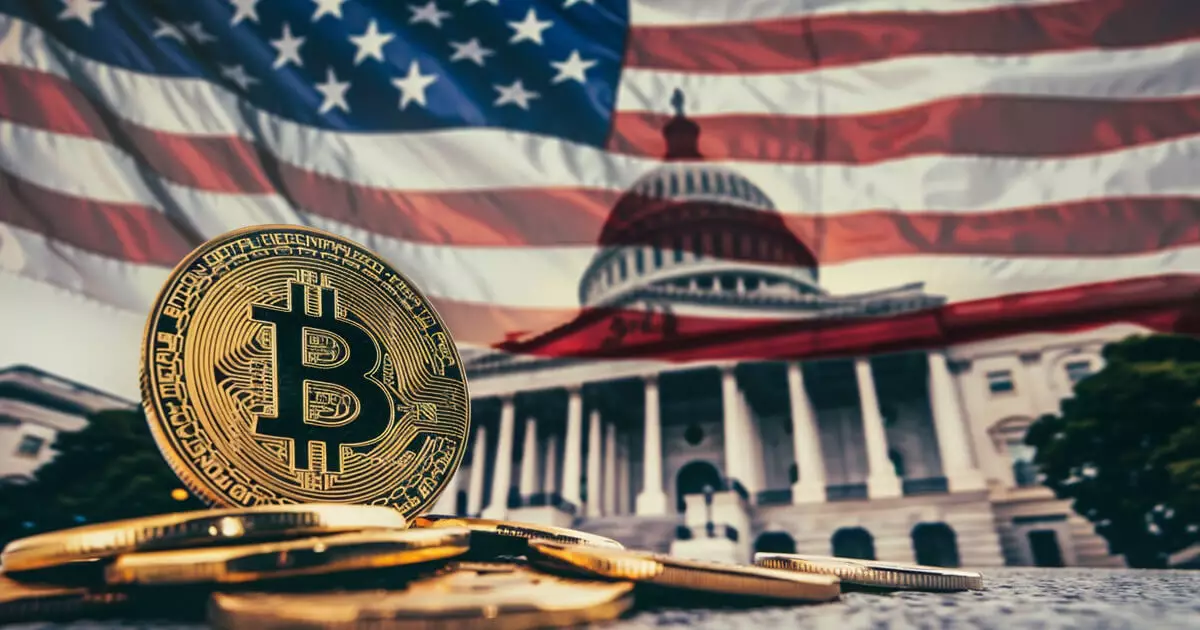The cryptocurrency market has long been synonymous with innovation, volatility, and regulatory uncertainty. Under the Trump administration, a new chapter could be unfolding as the White House’s appointed “Crypto Czar,” David Sacks, addresses the integration of cryptocurrencies into the U.S. economic framework. The establishment of a crypto working group tasked with evaluating the potential establishment of a Bitcoin reserve marks a crucial step towards legitimizing digital assets in the eyes of governmental oversight.
Regulatory clarity has remained elusive for cryptocurrency ventures over the past few years. Sacks emphasized the repercussions of this uncertainty; the lack of a structured regulatory environment has pushed many innovations offshore. As the Trump administration seeks to counteract this trend, Sacks is committed to working collaboratively with the Securities and Exchange Commission (SEC) to draft a federal regulatory framework that will not only define the parameters for cryptocurrencies and stablecoins but also differentiate between legitimate and fraudulent entities in the marketplace.
Legislators like Senators Tim Scott and French Hill echoed these sentiments, advocating for swift legislative processes aimed at formalizing the regulatory environment surrounding stablecoins within the administration’s first 100 days. By prioritizing stablecoin legislation, proponents argue that the U.S. can secure its position as the custodian of the world’s primary reserve currency—the U.S. dollar. This move is not merely about compliance; it reflects a larger ambition to position the dollar favorably against the burgeoning global cryptocurrency landscape.
The Clarity for Payment Stablecoins Act of 2024
The conversation around regulatory clarity gained traction with the introduction of Senator Bill Hagerty’s Clarity for Payment Stablecoins Act of 2024. This legislative proposal is designed to delineate a clear federal regulatory framework for stablecoins, ensuring that they operate responsibly within prescribed legal confines. A central tenet of the act is the necessity for stablecoin issuers to maintain a 1:1 reserve backing with liquid assets, lending greater confidence to users and investors who may be wary of instability in the looming crypto market.
Through this bill, the government seeks to foster accountability, requiring issuers to undergo regular audits and disclose reserve compositions monthly. The emphasis on transparency is pivotal, as it works towards protecting consumers, particularly in an era where financial mismanagement and fraud have periodically tainted the cryptocurrency’s allure.
However, the act does not just focus on current innovations; it calls for a two-year moratorium on algorithmic stablecoins, reflecting a cautious approach toward understanding their complexities and potential risks. By mandating such measures, the administration acknowledges the necessity for a thoughtful evaluation of the evolving stablecoin ecosystem before fully embracing its associated risks and benefits.
One significant challenge that lies ahead is the fragmented regulatory landscape governing digital assets—an issue that the SEC has recognized. Commissioner Hester Peirce, who has earned the endearing nickname “Crypto Mom” for her advocacy of an adaptable regulatory approach, has set forth a vision for an SEC crypto task force. This initiative aims to establish a cohesive regulatory framework that reconciles the need for investor protection with the encouragement of technological innovation.
Peirce candidly assessed the SEC’s prior approach as marked by ambiguity—a characterization that resonates with many within the crypto community. By forging connections across regulatory agencies and engaging Congress, the task force plans to define clear rules regarding token offerings, security classifications, and potentially, custodial practices for investment advisers.
Moreover, Peirce’s acknowledgment of the need for public engagement in shaping regulatory policies is a noteworthy shift toward inclusivity in governance, allowing market participants to contribute actively to the dialogue surrounding crypto regulation.
The Broader Implications for the Cryptocurrency Ecosystem
The unfolding regulatory landscape offers a glimpse into a potential future where digital assets are not limited by the shadows of illegitimacy and suspicion, but instead are recognized as integral components of the financial ecosystem. As the Trump administration accelerates its legislative efforts, the broader impact of these regulations will likely shape the trajectory of the cryptocurrency market.
Establishing clear compliance standards is crucial not only for protecting consumers and investors but also for reinforcing the U.S. dollar’s supremacy in international finance. By moving towards defined regulations and fostering innovation, the U.S. could potentially lead the charge into what has been dubbed Internet 3.0, with cryptocurrencies acting as conduits for value.
The next steps taken by the Trump administration, legislative bodies, and regulatory agencies will be critical in determining how effectively they can cultivate a thriving digital asset sector that benefits all stakeholders in an evolving global financial landscape. The capacity for innovation inherent in cryptocurrencies may very well flourish under a renewed regulatory framework—provided that it balances oversight with the desire for progress.

